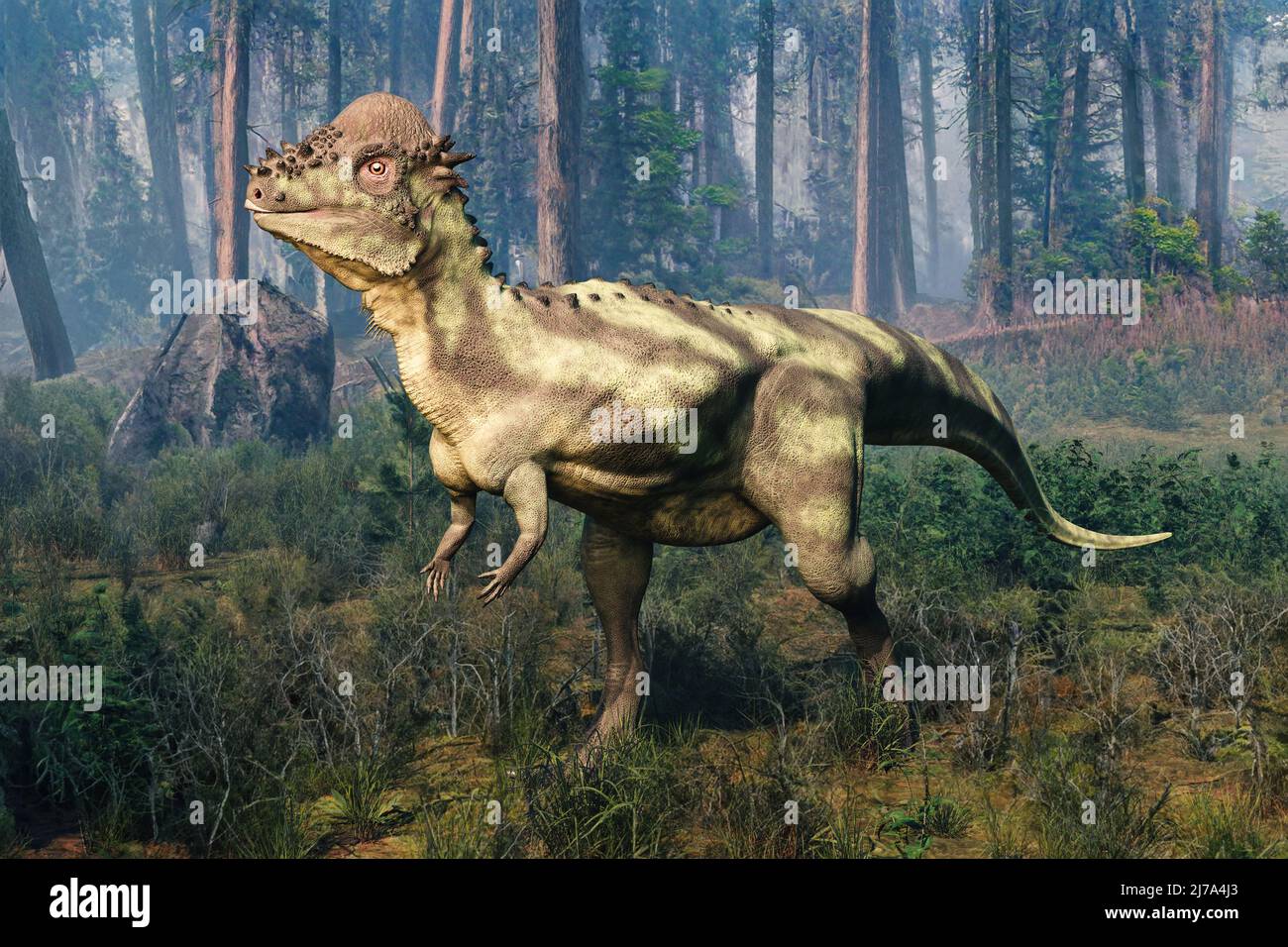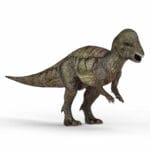Ever stumbled over “Pachycephalosaurus?” This herbivore from the Late Cretaceous, known for its thick skull, has a name that can be a mouthful. But fear not, dino enthusiast! This guide will help you pronounce “Pachycephalosaurus” like a paleontology pro.
Unlocking the Dino Lingo: Pachycephalosaurus Pronunciation Made Easy
We’ve all been there – faced with a dinosaur name that sounds more like a tongue twister. “Pachycephalosaurus” is one of those names. But don’t worry, pronouncing it correctly isn’t as hard as it seems. Let’s decode this dino name and have you sounding like an expert in no time!
Deciphering the Name
“Pachycephalosaurus,” though lengthy, tells us a lot about the dinosaur. Here’s the breakdown:
- Pachy: From the Greek word for “thick”
- Cephale: Meaning “head”
- Sauros: Translates to “lizard”
Put it all together, and you have a “thick-headed lizard” – a fitting description given its prominent dome-shaped skull!
The American Way vs. the British Way
Like many words, “Pachycephalosaurus” has variations in pronunciation depending on where you are:
- American English: /ˌpækiˈsɛfələˌsɔr/ (Emphasis on “SORE”)
- British English: /ˌpakɪˈsɛf (ə)ləsɔː/ (Emphasis on “SEFF”)
Taming the Tongue Twister: Tips and Tricks
Here are some proven ways to master “Pachycephalosaurus”:
- Practice Makes Perfect: Say it aloud regularly, even if it feels silly at first.
- Phone a Friend (or a Pronunciation Tool): Online dictionaries like Forvo or HowToPronounce offer audio pronunciations in both American and British accents.
- Slow and Steady Wins the Race: Break the word into syllables: pak-ee-sef-ah-low-saur-us. Practice each one slowly, then gradually connect them, increasing your speed.
You’ve Got This!
With a little effort and these tips, you’ll be confidently saying “Pachycephalosaurus” in no time. Impress your friends with your newfound dinosaur knowledge!
What Does “Pachycephalosaurus” Mean?
The name “Pachycephalosaurus,” though a mouthful, is a straightforward description of this unique dinosaur. As we’ve learned:
- Pachy: Greek for “thick”
- Cephalo: Greek for “head”
- Saurus: Greek for “lizard”
Therefore, “Pachycephalosaurus” means “thick-headed lizard” – an apt description considering its most notable feature: its incredibly thick skull, measuring up to 10 inches of solid bone!
The Purpose of the Dome: Theories and Debates
Why did Pachycephalosaurus have such a robust skull? Scientists have a few theories:
- Head-Butting: Some believe they used their heads for head-butting, perhaps to compete for mates or territory, similar to modern-day bighorn sheep.
- Display: Others suggest the thick skull might have been for display, like a peacock’s feathers, to attract mates or intimidate rivals.
Further research is needed to unlock the mysteries of the Pachycephalosaurus skull.
What’s Pachycephalosaurus’ Nickname?
With its incredibly thick skull, it’s no surprise that Pachycephalosaurus has earned the nickname “bonehead.” It’s a memorable moniker that highlights its most defining feature.
Beyond the Nickname: Unraveling the Mysteries
While “bonehead” is catchy, it doesn’t encompass the full mystery of Pachycephalosaurus. Scientists are still unsure why it evolved such a thick skull. Was it for head-butting, display, or both?
Adding to the intrigue, there’s ongoing debate about whether dinosaurs like Stygimoloch and Dracorex, with similar head structures but smaller sizes, were separate species or perhaps younger Pachycephalosaurus. It’s like trying to determine if different dog breeds are separate species or variations within the same species.
So, while we might call them “boneheads,” Pachycephalosaurus continues to fascinate scientists with its unique features and the mysteries surrounding its behavior. Each new fossil discovery brings us closer to understanding these incredible creatures.
Want to explore other fascinating dinosaurs? Check out the Pachysaurus. And for a glimpse into a different kind of prehistoric encounter, read about the orc eating moose.
- Understanding GVAA Rates: A Practical Guide for Voice Actors and Clients - December 25, 2024
- Resuming Intimacy After Endometrial Ablation: A Guide to Healing and Reconnection - December 25, 2024
- Homunculus Servant 5e: The Ultimate Artificer’s Guide (Stats, Strategies, and Secrets) - December 25, 2024
















1 thought on “How to Pronounce Pachycephalosaurus: A Simple Guide (with Audio)”
Comments are closed.